Oregon’s winter storms are a force to be reckoned with, and they can wreak havoc on your masonry fireplace and chimney. Every year, we experience an apocalyptic storm that puts an immense amount of stress on the masonry materials that your fireplace and chimney are built with. While masonry may appear solid and sturdy, it’s actually a soft and porous material that can absorb water like a sponge.
This absorption can lead to a host of problems that can compromise the integrity of your chimney and even put your home at risk of a fire.
As an instructor for the NFPA and president of the Oregon Chimney Sweeps Association, our intention in this article is to share exactly how masonry chimney and fireplace systems can become compromised by what has bbecome typical Portland weather. We will go into where to find the damage, how to prevent it, and the best way to get your standard home insurance to cover new water damage.
In this article, we’ll give all the advice that we wish our customers had when they started their search for chimney repair.
The Absorption of Water in Masonry Materials
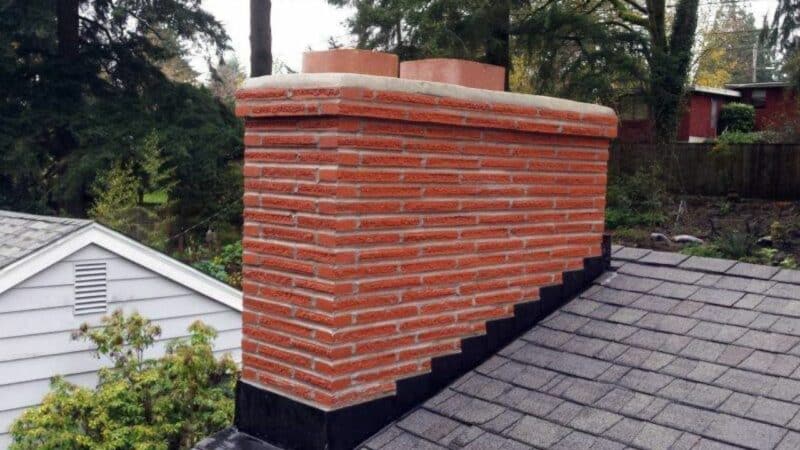
Masonry materials, including bricks and mortar, naturally soak up water like a sponge. Portland’s notorious rain and freezing conditions make this a big issue for homeowners. When water seeps into these materials, it’s more than a wet surface.
During the first part of our annual ice storms, its is typically characterized by heavy rains. Sheets of water absorb into each individual brick, adding weight. After several days of rain on a 30 ft tall chimney has gained an incredible amount of weight. A single brick can hold 4 lbs of water. So a 30 ft tall chimney with 2,000 bricks can gain a potential 8,000 lbs. That’s a potential load of 8,000lbs on the chimney and the footing beneath the chimney flue.
The next part of the storm is a relentless rain with a strong east wind that takes our average temperature below freezing. Portland sees periods of a week or more where we are below freezing in the 20’s F. 2-inch layer of ice covers the entire city, followed by frozen rain. What that does to the masonry is it causes expansion and contraction. All that water that was loaded in the chimney has not evaporated but instead turns into ice cubes and expands. It causes the masonry to crack and the material bonds to break. As a homeowner, you may notice bricks falling off, masonry cracking, or other symptoms of severe damage to the bricks themselves.
This constant cycle of water absorption and freezing degrades the integrity of your fireplace and chimney. You may have not even noticed how much water damage is being done, but the degradation inside your chimney increases the likelihood of chimney fires and elevated chimney repair costs. Homeowners need to be aware of what can occur during these storms-chimney don’t naturally take care of themselves in overly saturated environments like ours.
The Consequences of Water-Laden Chimneys
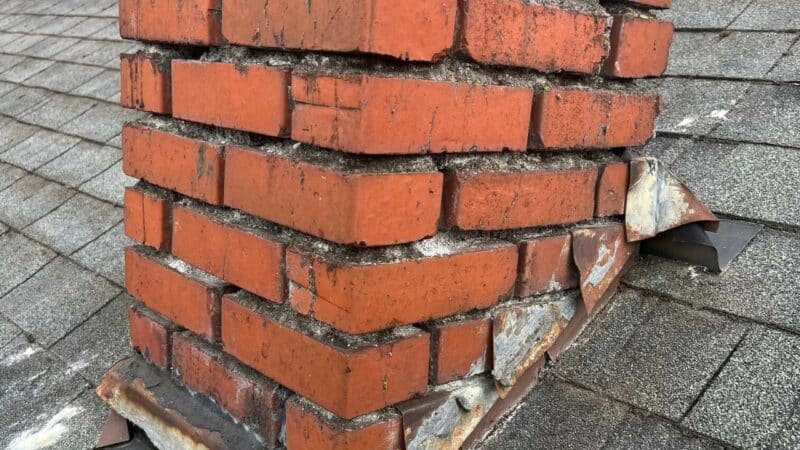
Portland’s winter storms are notorious for their heavy rains and freezing temperatures, which can wreak havoc on your masonry fireplace and chimney. When water seeps into the brickwork and mortar, it’s like a ticking time bomb. With each freezing cycle, the risk of damage to your chimney skyrockets.
You see, when that water gets into your chimney and then freezes, it expands and puts a huge amount of pressure on the masonry. That pressure can cause cracks or completely break apart the bricks and mortar. And here’s the scary part – you might not even know it’s happening. That damage can compromise the function and safety of your chimney, creating a hidden hazard for you and your family.
But let’s focus on the water-laden chimneys. The added weight of the water-soaked bricks puts an incredible amount of stress on your chimney and its footing. At Portland Fireplace And Chimney, we have repaired thousands of chimney’s across Portland and we have found that many chimneys in Portland aren’t even reinforced with rebar or other structural supports. That means that an additional 5-8,000 lbs of force is sitting squarely on bricks so they’re particularly vulnerable. As the chimney gets heavier and heavier, the structure can start to sink and pull away from your house, leaving gaps between the bricks and the siding. That’s a surefire sign of trouble.
Over time, this relentless cycle of water absorption and freezing can really do a number on your chimney. Even if your chimney stays standing and somewhat functional, it will perform far below efficient standards. If you let water damage go unchecked long enough, it can get so bad that repair might not even be an option anymore. You could be looking at a complete reconstruction of your chimney at 5-10x the cost of the initial repair.
That’s why it’s so critical for Portland homeowners who own a masonry chimney to stay on top of the condition of their flue. You’ve got to address them right away to protect your property and make sure your chimney and fireplace last for the long haul. Don’t let our Pacific Northwest weather get the best of your home-get those inspections and maintenance done regularly.
The Freezing Temperatures and Their Impact On Your Chimney’s Structural Integrity
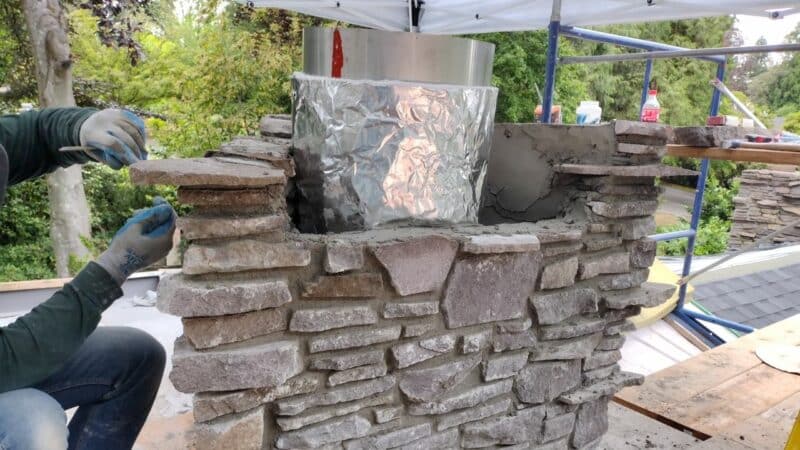
Portland’s winter storms are a one-two punch for your masonry fireplace and chimney. First, we get hit with the aforementioned rain that soaks into the bricks and mortar. But then, the weather takes a nasty turn. A strong east wind comes barreling in, bringing freezing temperatures that can last for days or even weeks. And that’s when the real trouble starts.
All that water that’s been absorbed into your chimney? It turns into ice. And when water freezes it expands. So those rain-soaked bricks are now expanding, breaking material bonds and cracking at each important juncture.
That expansion and contraction is bad news for your chimney’s structural integrity. The masonry cracks, and the material bonds that hold everything together break. Bricks can fall right off the chimney or roof, and the whole structure can become seriously damaged.
The worst part? You might not even know it’s happening. The damage can be hidden from view, slowly compromising your chimney’s ability to function safely and efficiently. Internal cracks in the masonry can let heat escape, which is a major fire hazard. The moment the combustion process is not fully controlled and released out the cap you have a risk of a house fire or carbon monoxide poisoning. And if harmful fumes can’t escape up the chimney like they’re supposed to, they could end up inside your flue, putting your family’s health at risk.
That’s why it’s so important to stay on top of chimney inspections and repairs, especially in a place like Oregon where our winters can be so tough on masonry. Don’t let a little flue, water and ice turn into a big problem down the road. Get your chimney checked out regularly and fix any issues before they become major headaches. Your safety and peace of mind are worth it.
The Thawing Process and Water Damage to Your Home
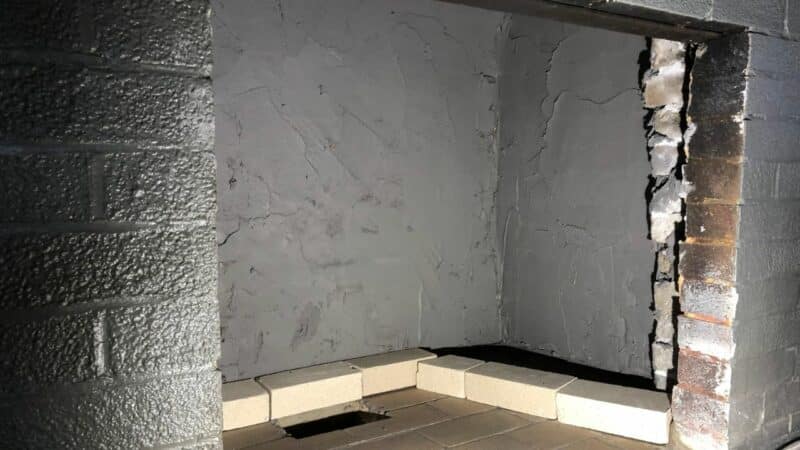
After the storm, as Portland warms up is when most homeowners will actually start to see the results of the damage from the previous storm. The warm temperatures might feel like a relief, but it starts a new cycle of challenges for masonry fireplaces and chimneys: water damage. The frozen water trapped in bricks and mortar now melts, going the only place it can go – deeper into the chimney’s structure, your walls, or your foundation.
Here’s the thing-during the freezing period, you might not even realize that cracks have formed in your chimney flue. It’s not until everything starts to thaw out that the signs of water damage become evident. You might start to see water coming out at the base where the foundation is or notice water spots on the mantle, the wall above the mantle, or even on the ceiling. That’s when it’s easiest to spot the problem.
The water that seeps deeper which you may not see can weaken the masonry from the inside out. It starts degrading the foundation of the chimney, leading to instability that can be downright dangerous:
- Water expansion during freezing pushes apart the brick and mortar, creating cracks.
- The thawing process allows water to penetrate deeper, risking further structural damage.
- Continuous cycles of freezing and thawing exacerbate the wear and tear, escalating repair costs.
If you don’t catch these issues early on, they can spiral out of control. Unchecked cycles of freezing and thawing can dramatically shorten the lifespan of your chimney, turning minor issues into major repairs or even requiring a full chimney rebuild. And trust me, that’s not a bill anyone wants to foot.
That’s why it’s so important for Portland homeowners to stay proactive. Regular inspections and maintenance from professionals like Portland Fireplace and Chimney can catch these problems before they become catastrophic. Don’t wait until you see those telltale water spots – get your chimney checked out regularly to keep your home safe and your wallet happy.
The Importance of NFPA Level 2 Inspections
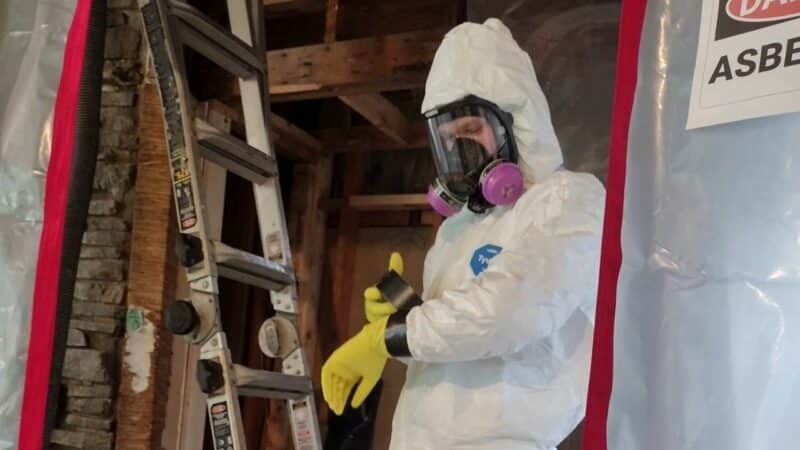
The number 1 way to protect your home and family from Portland, Oregon’s relentless winter storms is NFPA Level 2 Inspections. These inspections include detailed examinations of all accessible parts of the chimney exterior and interior, including attics, crawl spaces, and basements. With a comprehensive approach, they identify any damage or hazards that the harsh weather may have caused including exterior or interior cracking from the freeze/thaw cycle.
But here’s the thing – if your chimney has been through an external event like a major storm, a Level 2 inspection isn’t just a good idea, it’s a must. These inspections go beyond the basics, looking for signs of water intrusion in all the accessible areas of your chimney structure. That means getting up close and personal with your chimney, from the crown to the foundation.
During a Level 2 inspection, a certified professional will check for any cracks, gaps, or other damage that could be letting water in. They’ll take a detailed look at the masonry, the flue lining, and all the other components that keep your chimney functioning safely and efficiently. And here’s the kicker – they’ll document everything with photos and detailed notes.
That documentation isn’t just for show. It’s your golden ticket if you need to file a homeowners insurance claim for chimney damage. With a Level 2 inspection report in hand, you’ve got the proof you need to show your insurance company that the damage was caused by an external event, not just wear and tear. And that is often exactly what you need to get your claim approved and your repairs covered in total by a standard home insurance policy.
So if you’ve been through a major storm or you’re seeing signs of water damage in your flue, don’t hesitate to get a Level 2 inspection from Portland Fireplace and Chimney. It’s the best way to catch problems early, avoid costly repairs down the line, and keep your home safe and sound. And if you do need to file an insurance claim, that inspection report will be your best friend. It’s worth every penny.
The Risks of Undiagnosed Chimney Damage
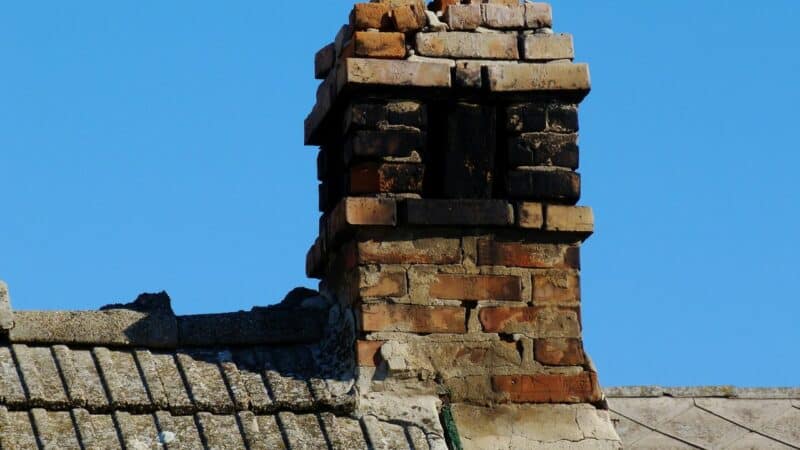
Oregon’s winter storms put masonry fireplaces and chimneys to the test. The relentless rain, wind, and freeze-thaw cycles can lead to subtle yet significant water damage over time. When this damage goes unnoticed or untreated, the risks to your home and safety can multiply.
But here’s the scary part – sometimes, you might not even realize that water is getting into your chimney. These undetected intrusions can pose an even bigger threat to your home and family. When water seeps in and causes cracks in your chimney system, it’s not just about structural damage anymore. Those cracks can actually start transferring heat to places it shouldn’t go. And when that happens, you’re looking at a serious fire hazard.
Imagine this: you light a fire in your fireplace, thinking everything is fine. But little do you know, there are cracks in your chimney flue that are letting heat escape. That heat could be seeping into your walls, your attic, or even your roof. And before you know it, you’ve got a house fire on your hands. It’s a nightmare scenario that no homeowner wants to face.
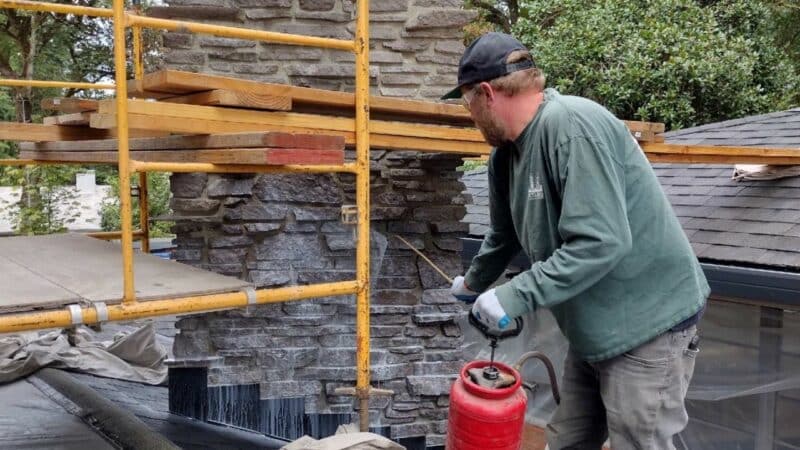
That’s why the National Fire Protection Association (NFPA) recommends annual inspections for all chimneys, no matter what kind of fuel you use. Whether you’re burning wood, gas, oil, or pellets, your chimney needs to be checked out by a professional chimney sweep every single year. No exceptions.
During an annual inspection, a certified chimney sweep will look for any signs of flue damage or deterioration. They’ll check for cracks, gaps, and other issues that could be compromising your chimney’s safety and efficiency. And if they find anything that needs fixing, they’ll let you know right away so you can get it taken care of before it turns into a bigger problem.
So don’t wait until it’s too late. Schedule your annual chimney inspection today and give yourself some peace of mind. Because when it comes to keeping your home and family safe, there’s no such thing as being too cautious. Trust the experts at Portland Fireplace and Chimney to keep your chimney in top shape, no matter what Old Man Winter throws our way.
Conclusion
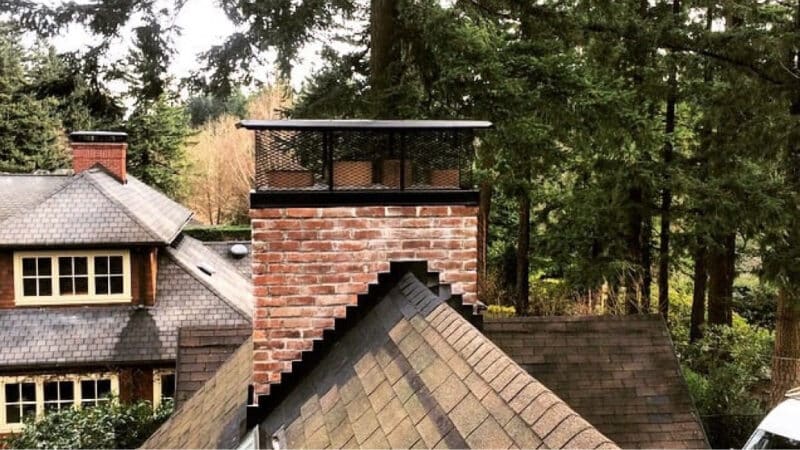
Portland’s winter storms can lead to significant damage to your masonry fireplaces and chimneys due to extreme weather conditions. The cycle of water absorption followed by freezing temperatures, causes the bricks and mortar to expand and crack. This undermines the structural integrity of the chimney and fireplace, posing serious safety risks and potentially leading to costly repairs.
The warning signs of water damage and the need for repairs often go unnoticed until it’s too late.
Given these challenges, it’s essential for homeowners in Oregon to schedule NFPA Level 2 Inspections no matter what type of fireplace they have. Experts like us use specialized knowledge to keep fireplaces safe and protect homeowners from unexpected disasters and financial surprises.
If you have not had an NFPA Level 2 Inspection in awhile you can click here to schedule yours today.
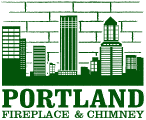
Portland Fireplace and Chimney Inc is your top notch pick for a fireplace and chimney company in the greater Portland metro area.

